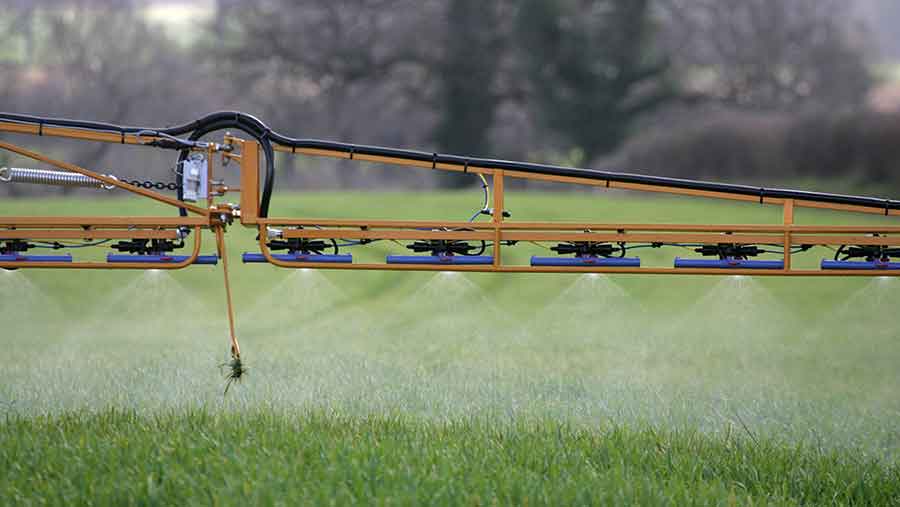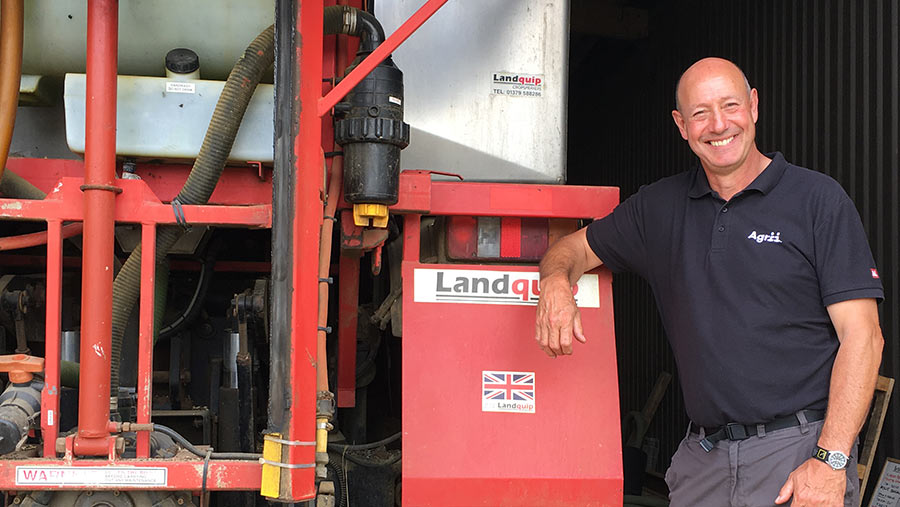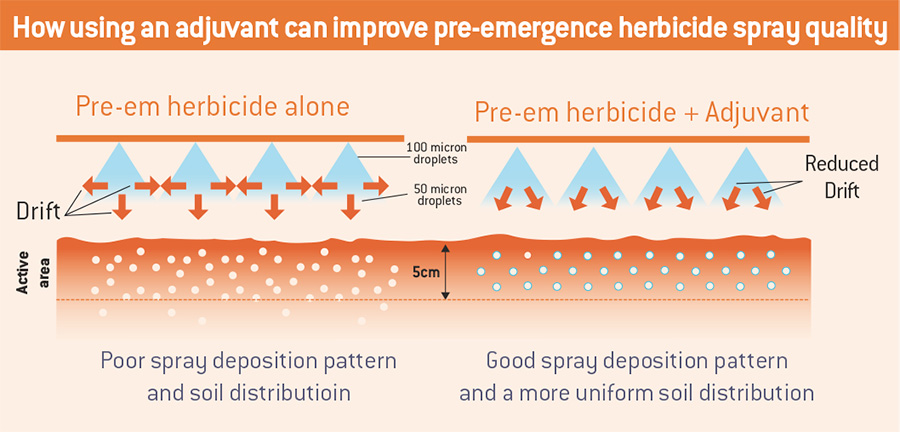Advice on using adjuvants to control and cut spray drift
Pairing sprays with an adjuvant can provide growers with greater levels of weed and disease control thanks to a better quality application.
Sometimes misunderstood, adjuvants do not actually have any fungicide, pesticide or herbicide activity, but they can enhance the performance of chemical options, especially those with dwindling efficacy.
In some cases improved application makes a bigger difference than product changes, says Agrii’s regional commercial manager Pippa Hutchinson.
See also: Kill more grassweeds with your stubble sprays
“If you compromise on application then that can almost make the difference between success and failure.
“We already have enough problems controlling blackgrass for example, without wasting the pre-emergence herbicide spray.”

© Tim Scrivener
Agrii is working with regional technical adviser and Leaf farmer David Felce to conduct field scale adjuvant trials at his family farm in St Neots, Cambridgeshire, using the farm’s Demount sprayer.
Ms Hutchinson says the trial work was born out of David’s enthusiasm for using adjuvants and top-quality spraying.
Work started last autumn with residual pre-emergence herbicide applications and continued this spring with T0, T1, T2, T3 fungicide sprays.
It builds upon seven years’ worth of small plot adjuvant trials by Agrii looking at teaming a wide range of pre-emergence herbicide products with the adjuvant product Backrow at a standard rate of 0.2 litres/ha.
One of the conclusions was that, compared with using a pre-emergence spray on its own, this particular adjuvant gave an average of 12% fewer blackgrass heads/sq m in a field of winter wheat with 500 blackgrass heads/sq m.
Spray delivery
Mr Felce explains adjuvants help to improve the spray delivery and this improvement can potentially earn growers an extra 10% control through a better application.
He farms about 100ha growing winter and spring wheat and oilseed rape, has permanent pasture land in environmental schemes and works in conjunction with a neighbouring farm.
Adjuvants have been used commercially on farm since the late-1970s where product labels recommend their inclusion in the tank mix.

Cambridgeshire grower David Felce is passionate about top-quality spraying and believes adjuvants can help with this © Oli Hill/RBI
Over the past eight years Mr Felce has been looking at what adjuvants can do beyond the basic label requirements.
“It is about understanding what they do in the mix and the basics of spraying before you can appreciate the worth of the adjuvant.
“With adjuvants we are manipulating spreadability and tank mixability to stop block ups or to be able to do one pass with the sprayer rather than two.
“Then there is a direct benefit of using an adjuvant, like saving time or hitting timings better.”
Speed v quality
Timing is critical in getting a good spray on and while the most obvious solution to hitting timings correctly is to up the work rate, Mr Felce points out that this is self-defeating.
That’s because the application quality, and therefore the level of control achieved, will fall as the sprayer speed climbs.
The higher the forward speed, the greater amount of air turbulence the spray droplets are hit by on their journey from spray nozzle to target.
“As an industry we have been pushing the importance of spray timing but growers don’t always understand that going faster with the sprayer to get more done in the spray window time has negative effects,” notes Ms Hutchinson.
Once spray droplets leave the nozzle tip they are being mostly carried by their own weight and the force of gravity, as opposed to the pressure generated by the sprayer.
“There is always a range of droplet sizes in a spray fan [see diagram, below]. Bigger, heavier droplets travel faster and smaller, lighter droplets are more affected by drag,” says Mr Felce.
This is where using an adjuvant comes in, gluing the finer droplets at the extremities of the spray fan together to make them more predictable and working to give a more uniform size.
As a result more of the spray gets where it needs to go, maximising coverage, booting control and cutting spray drift.

Ms Hutchinson puts a renewed interest in adjuvants down to the fact that growers are struggling to hit spray windows, particularly so with the tricky conditions seen earlier this year.
“Growers are starting to look at ways of mitigating this.
“New research on application is driving a renewed interest in adjuvants, and the research with water sensitive paper is very visual too which helps growers see the differences in spray pattern,” she says.
The trial work is set to continue on the farm, with a closer look at how adjuvants can aid the T3 ear spray highlighted as one area for more research.
Mr Felce explains that the T3 head spray is far more complex than spraying a leaf because it is an upright cylindrical shape with lots of nooks and crannies for disease and pests to hide in.
The inclusion of an adjuvant at T3 could help achieve superior coverage for relatively small added cost.
“We are spending a huge amount of money on chemicals. What is the point of spending a bit more on fungicide if you aren’t getting the best out of your spray efficacy anyway?” he says.

